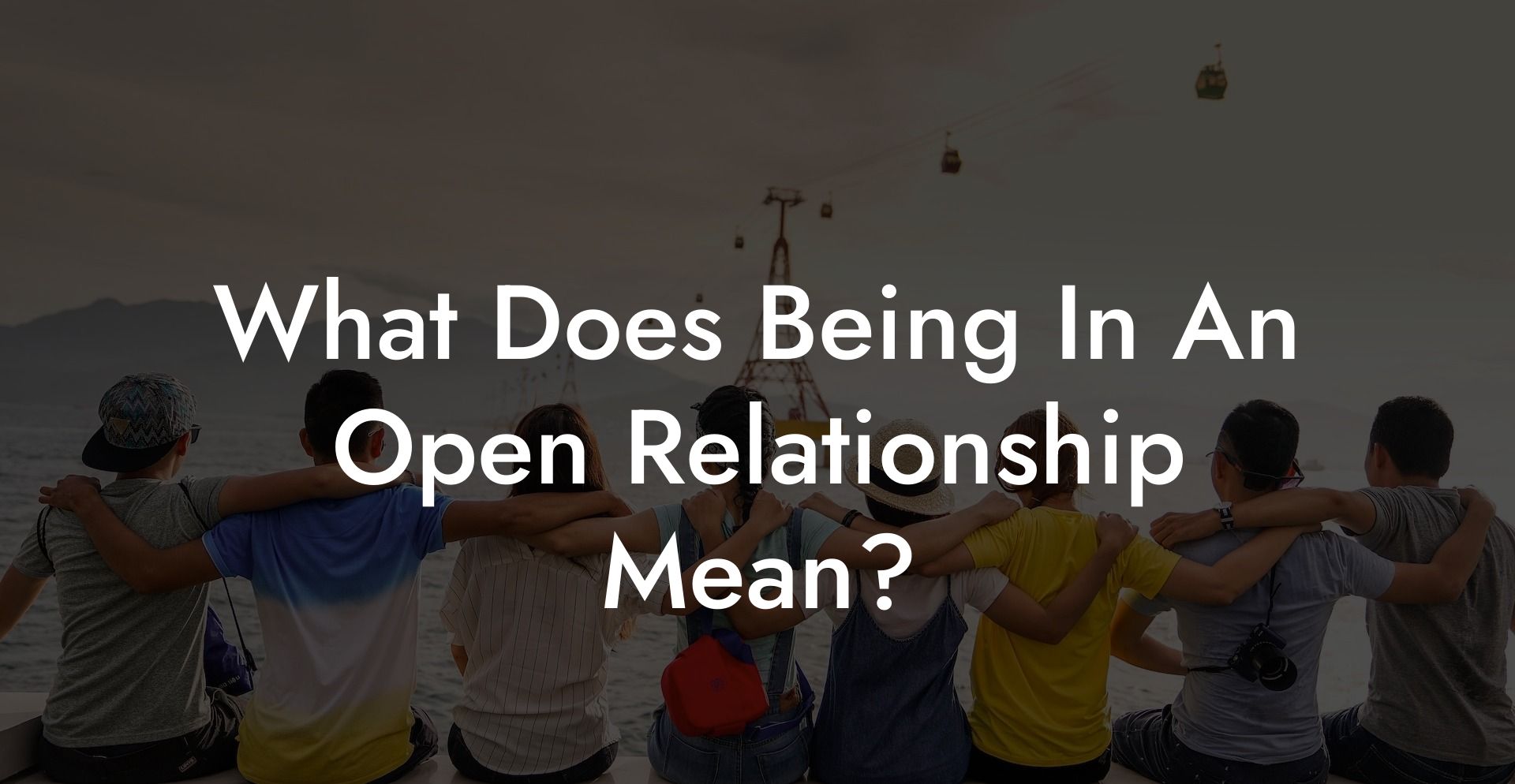In today's fast-changing world, the concept of relationships continues to evolve. As we aim to break free from the shackles of traditional thinking, there is a growing curiosity about alternative lifestyles and ways of loving one another. Enter the open relationship. But what does being in an open relationship really entail? In this article, we dive deep into the world of open relationships and explore their dynamics, communication, and boundaries.
What Does Being In An Open Relationship Mean Table of Contents
Picture this: two people are in a loving and committed relationship, but they both agree that they can pursue other romantic or sexual connections outside of their partnership. For some, this may seem strange or lead to feelings of insecurity, while for others, it could be a logical and fulfilling path. The term 'open relationship' may evoke various emotions, but let's set our judgments aside and find out everything we need to know about them. Welcome to The Monogamy Experiment's guide to open relationships.
An open relationship is a form of non-monogamy where both partners agree to engage in romantic or sexual connections with other people, outside of their primary relationship. This arrangement comes in many forms and shapes, and that solely depends on the unique desires, needs, and boundaries established by both individuals.
Key aspects of open relationships
Communication
The foundation of any successful open relationship is open and honest communication. Discussing with your partner about your desires, expectations, and boundaries is crucial to ensure both partners are on the same page and that the relationship stays healthy.
Trust
Trust is essential in any relationship, but it becomes increasingly important in open relationships. Despite the freedom to interact with others outside the relationship, trust must be maintained at all times as both partners rely heavily on each other’s honesty and integrity.
Setting boundaries
Establishing clear boundaries and guidelines in an open relationship is incredibly essential. Whether it's emotional or physical connections or specific people being off-limits, all parties involved need to agree on these boundaries to prevent misunderstandings.
Emotional management
Navigating the emotions involved in an open relationship may be challenging at times. Feelings of jealousy, insecurity, and doubt might arise for one or both partners. Accepting and managing these emotions and addressing them with your partner is essential for the relationship's well-being.
Example
To better understand open relationships, let's look at a realistic example. Mike and Lucy have been in a monogamous relationship for three years. They both have a strong connection, but they begin to express curiosity about exploring romantic and sexual experiences with other people. After an open and honest conversation, they decide to embark on an open relationship.
To ensure it works for both of them, they set some ground rules. For instance, they agree to always use protection with other partners and to disclose any new connections with each other. They also decide that close friends are off-limits to avoid complications within their social circle.
As their journey unfolds, Mike becomes close with a coworker, while Lucy meets someone through an online dating platform. They continue to keep their lines of communication open, checking in regularly with each other to discuss their feelings and emotions.
Open relationships may not be for everyone, but for those willing to explore this alternative lifestyle, it can be an exhilarating and fulfilling journey. With proper communication, trust, and boundaries in place, individuals in open relationships can grow and learn from their experiences. As we delve deeper into non-monogamy and polyamory, we hope that this guide provides you with all the information you need to make informed choices about your relationship preferences.
If you found this article both insightful and engaging, feel free to share it with friends or explore other guides available at The Monogamy Experiment. Together, we can continue to learn about the myriad ways to love and connect with one another.













